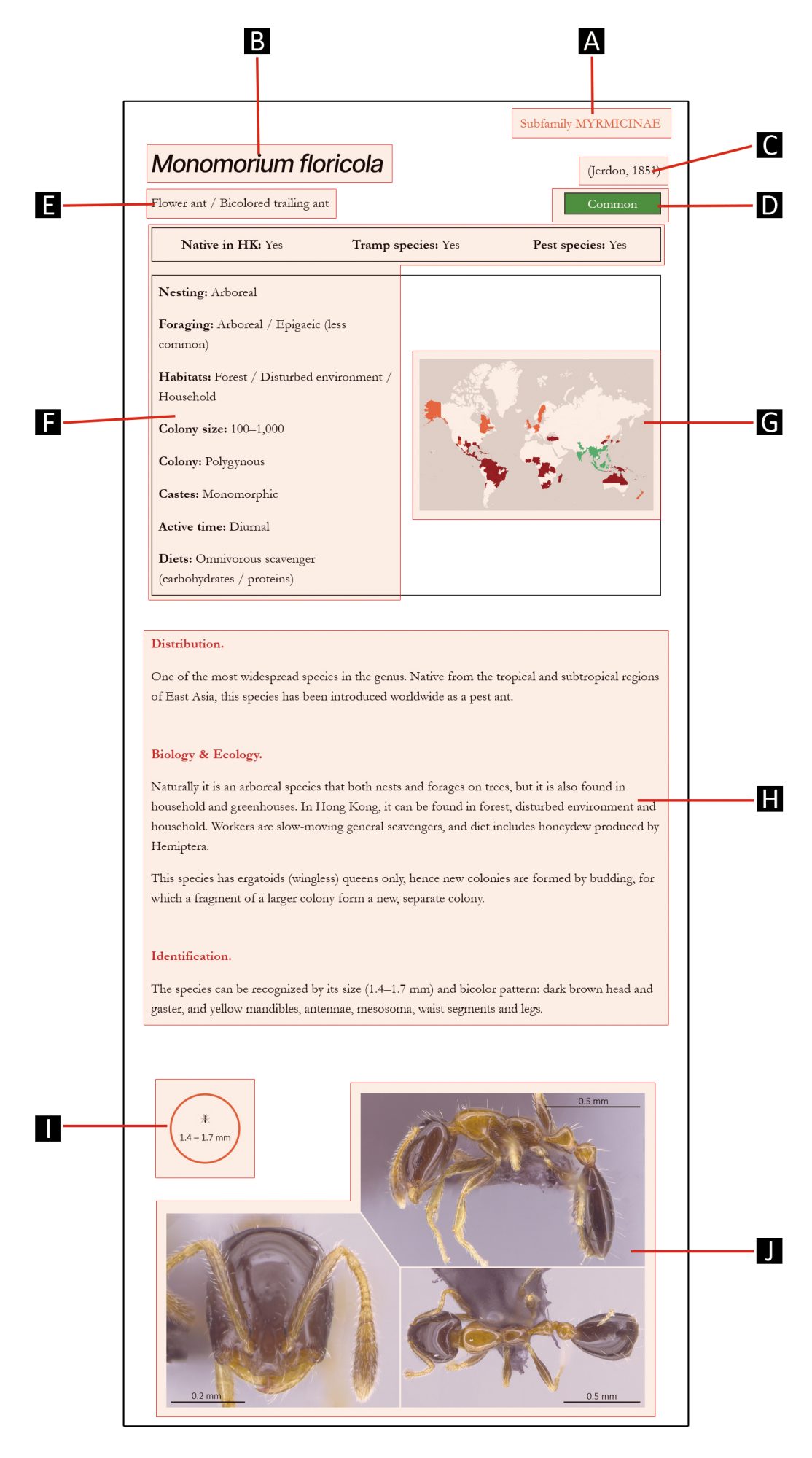
Subfamily FORMICINAE
Anoplolepis gracilipes
(Smith, 1857)
Yellow crazy ant
Common
Native in HK: Yes
Tramp species: Yes
Pest species: Yes
Distribution.
One of the most widespread species of the genus. Native from the tropical and subtropical regions of East Asia, this species has been introduced worldwide.
Biology & Ecology.
In native habitats, nests are medium in size and contain several thousand workers. However, in introduced environment, in particular on small islands with low competition, this species is able to form supercolonies of up to millions of individuals, and workers are able to move freely between the interconnected nests and show little to no aggression with one another.
As its common name implied, this is an ant species known for its aggressiveness. Unlike many tramp ant species that do not necessarily impact the local native fauna after being introduced, this is an invasive species that both directly and indirectly alter the community. It has been found to associate with many agricultural pests that injure crops and protect them in exchange for honeydew. This means they may help the establishment of other invasive species in the new environment.
Identification.
The species can be recognized by its yellow to orange homogeneous coloration, mandibles with eight teeth, long antennae with 11 segments and long legs.




